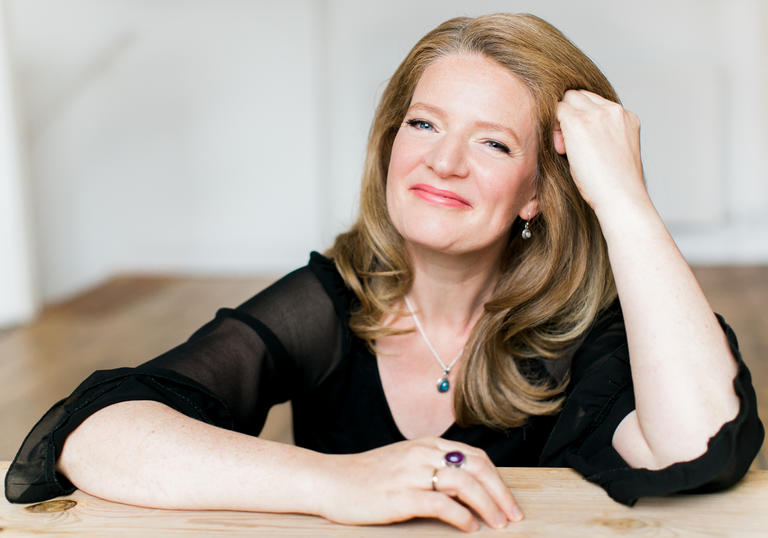
Programme and performers
Johann Sebastian Bach Toccata and Fugue in D minor, BWV565 (arr Chad Kelly in A minor)
Nicola Matteis Jr Fantasia in C minor, Con Discretione
Johann Joseph Vilsmayr Artificiosus Concentus pro Camera
1. Prelude
2. Aria
3. Saraband
4. Aria
5. Minuet
6. Aria
7. Minuet
8. Aria
9. Gigue
10. Aria variata
A Suite of short movements from the Nogueira and Klagenfurt manuscript
Johann Paul von Westhoff Suite pour le violon seul sans basse
1. Prelude
2. Allemande
3. Courante
4. Sarabande
5. Gigue
Giuseppe Tartini Violin Sonata No 17 from Piccole Sonate
1. Andante cantabile di se senti
2. Allegro assai
3. Aria del tasso
4. Furlana
5. Minuet
Chad Kelly Phantasia
Johann Sebastian Bach Cello Suite No 6
in G major, BWV1012
1. Prelude
2. Allemande
3. Courante
4. Sarabande
5. Gavotte I & II
6. Gigue
Rachel Podger violin
Biography
Rachel Podger has established herself as a leading interpreter of the Baroque and Classical violin. She was the first woman to be awarded the Royal Academy of Music/Kohn Foundation Bach Prize in October 2015, was named Gramophone Artist of the Year in 2018, and the Ambassador for REMA’s Early Music Day in 2020. She is the founder and Artistic Director of Brecon Baroque Festival and her ensemble Brecon Baroque, as well as being Patron for The Continuo Foundation and an Ambassador for the Learned Society of Wales.
She has been artist-in-residence at Wigmore Hall and collaborates with orchestras and ensembles worldwide, including most recently the BBC Philharmonic, Royal Northern Sinfonia and Philharmonia Baroque.
Current and forthcoming engagements include concerts with Tafelmusik, Salamanca Baroque, Luthers Bach Ensemble, Handel and Haydn Society, Montana Baroque and Tesserae Baroque.
She has worked as a director and soloist with many other collaborators, among them VOCES8, Robert Hollingworth and I Fagiolini, Robert Levin, Jordi Savall, Christopher Glynn, Kristian Bezuidenhout, Masaaki Suzuki, Armonico Consort, Orchestra of the Age of Enlightenment, Academy of Ancient Music, San Francisco Early Music, Holland Baroque Society and the Oregon Bach Festival.
Her most recent release on Channel Classics is Tutta sola: featuring much of the repertoire she plays tonight; other releases include C P E Bach with Kristian Bezuidenhout, and The Goldberg Variations Reimagined: a new arrangement by Chad Kelly with Brecon Baroque. Recent releases with Christopher Glynn include the world premiere of three previously unfinished Mozart sonatas and Beethoven Sonatas Nos 1, 5 and 10. Past releases include Vivaldi’s The Four Seasons with Brecon Baroque and Bach Cello Suites transposed for the violin.
She has won numerous accolades, including two Gramophone Awards for Vivaldi’s La Stravaganza concertos (2003) and Biber’s Rosary Sonatas (2016); a Diapason d’Or de l’année for her recording of Vivaldi’s La Cetra concertos (2012); two BBC Music Magazine awards for Guardian Angel (2014) and the complete Vivaldi L’Estro Armonico concertos (2016).
Recent highlights include featuring in the VOCES8 Foundation’s LIVE From London festival in a new advent version of A Guardian Angel, alongside I Fagiolini in their Christmas programme Angels and Demons, performing solo Bach for the Gramophone Award-winners’ Digital Gala, appearing at Bitesize Proms, BOZAR at Home, Living Room Live, Baroque at the Edge, and participating in a collaborative disc by Musicians for Musicians: Many Voices on the Theme of Isolation.
A dedicated educator, she holds the Micaela Comberti Chair for Baroque Violin (founded in 2008) at the Royal Academy of Music and the Jane Hodge Foundation International Chair in Baroque Violin at the Royal Welsh College of Music & Drama. She has a relationship with The Juilliard School in New York where she visits regularly.
